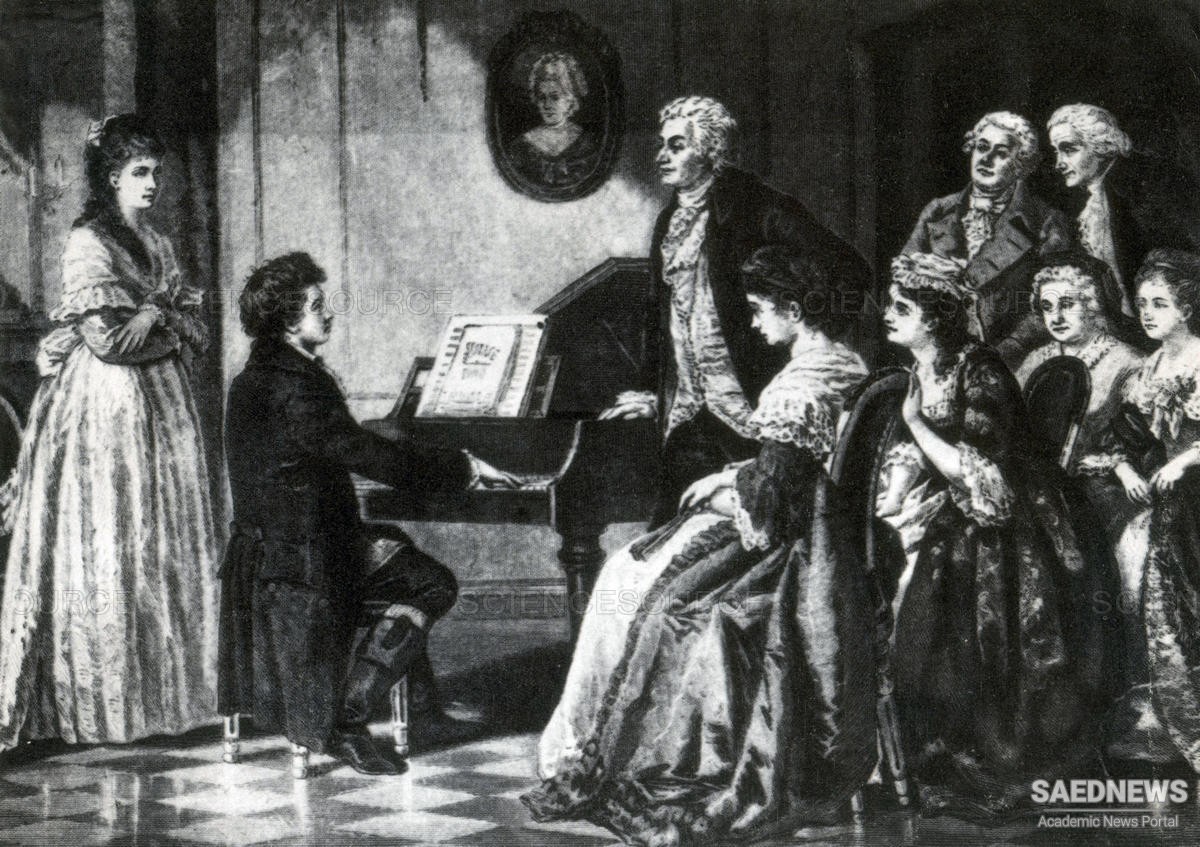In spite of his success as a pianist and composer, Mozart had serious financial worries, and they worsened as the Viennese found other idols. Success in the court opera house was all-important. At Mozart’s request, Lorenzo Da Ponte, an Italian of Jewish descent who was a talented poet and librettist of the court theatre, wrote a libretto, Le nozze di Figaro, based on Beaumarchais’s revolutionary comedy, Le Mariage de Figaro. Both Figaro and the later opera Don Giovanni treat the traditional figure of the licentious nobleman. Perhaps the central achievement of Figaro lies in its ensembles, with their close link between music and dramatic meaning. Figaro reached the stage on May 1, 1786, and was warmly received. The opera also enjoyed popularity in Prague, and at the end of the year Mozart was invited to go to the Bohemian capital; he went in January 1787 and gave a new symphony there, the Prague (K 504). He returned to Vienna in February 1787. In May 1787 Mozart’s father died. From this time Mozart’s music includes the two string quintets K 515–516, as well as a number of short lieder and three instrumental works of note: the Musikalischer Spass (Musical Joke), a goodhumoured parody of bad music; Eine kleine Nachtmusik, the much-loved serenade; and a piano and violin sonata, K 526. But Mozart’s chief occupation during 1787 was the composition of the comic opera Don Giovanni, commissioned for production in Prague; it was given on October 29 and was positively received. Don Giovanni was Mozart’s second opera based on a libretto by Da Ponte. On his return from Prague in mid-November 1787, Mozart was at last appointed to a court post, as Kammermusicus. The salary of 800 gulden seems to have done little to relieve the Mozarts’ chronic financial troubles. Their debts, however, were never large; their anxieties were more a matter of whether they could live as they wished than whether they would starve. Nevertheless, Mozart was deeply depressed during the summer, writing of “black thoughts.” During the time of this depression Mozart was working on a series of three symphonies, K 543, K 550, and K 551 (the Jupiter; these, with the work written for Prague (K 504), represent the summa of his orchestral output. The summer of 1789 saw the composition of the clarinet quintet, and thereafter Mozart concentrated on completing his next opera commission; the third of his Da Ponte operas, Così fan tutte was given on Jan. 26, 1790. This opera, the subtlest, most consistent, and most symmetrical of the three, was long reviled on account of its subject, female fickleness; but a more careful reading of it reveals that it is no frivolous piece but a penetrating essay on human feelings and their mature recognition. Features of the music of Così fan tutte—serenity, restraint, poise, irony— may be noted as markers of Mozart’s late style. The remainder of the year was difficult and relatively unproductive. Music was flowing again in 1791: for a concert in March Mozart completed a piano concerto (K 595), reeled off numerous dances, and wrote two new string quintets. He also composed the score to Emanuel Schikaneder’s Die Zauberflöte (The Magic Flute), and received another commission, for a requiem, to be composed under conditions of secrecy. In July Constanze gave birth to their sixth child, one of the two to survive. Mozart’s letters to her show that he worked first on Die Zauberflöte before he left for Prague near the end of August. Pressure of work, however, was such that he took with him to Prague, along with Constanze, his pupil Franz Xaver Süssmayr, who almost certainly composed the plain recitatives for the new opera. Mozart was back in Vienna by the middle of September; his clarinet concerto was finished by September 29, and the next day Die Zauberflöte had its premiere. The opera became the most loved of all of Mozart’s works for the stage. Mozart had been ill during the weeks in Prague, but in October he managed to write a Masonic cantata and to work steadily on the commissioned requiem. Later in November he was ill and was confined to bed, and on December 5 he died of a severe fever. Constanze Mozart was anxious to have the requiem completed, as a fee was due. She handed it first to Joseph Eybler, who supplied some orchestration, and then to Süssmayr, who produced a complete version, writing several movements. This has remained the standard version of the work, if only because of its familiarity.


 Wolfgang Amadeus Mozart: the Apex of Viennese Classic School
Wolfgang Amadeus Mozart: the Apex of Viennese Classic School














































